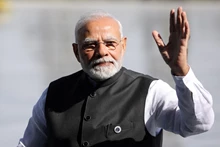
Because the subsidized insurance plan has only covered roughly 1% of the overall cattle population, the move might increase coverage to 10% in the next three years. "The plan is in its early stages, and it is difficult to predict how it will take shape because states must also be consulted. If the scheme is designed after the Pradhan Mantri Fasal Bima Yojana (PMFBY), their subsidy portion will rise," according to an official source.
According to sources, the Department of Animal Husbandry and Dairy (DAHD) met with insurance firms and state governments last week. Over 19 crore of the 54 crore livestock population are cattle. Farmers pay a fixed 1-2% premium of the sum insured under PMFBY, with the remaining premium amount subsidised equally by the Centre and the State on a 50:50 basis. However, some states abandoned the scheme because to the hefty expense of premium subsidies. Andhra Pradesh and Punjab have recently joined, and Telangana may also rejoin the PMFBY system.
Currently, the NLM limits the subsidy to five animals per beneficiary per home for all animals except sheep, goats, pigs, and rabbits. The maximum number of sheep, goats, pigs, and rabbits eligible for insurance premium subsidies is 50. The Centre has also set 4.5 percent of the sum insured as the maximum annual premium to be imposed in all states save the north-east and Himalayan regions. In such hilly states, insurers can charge 5.5 percent. When animals are covered for two or three years, the maximum premium is lower.
According to sources, it is being debated whether the "no premium" for beneficiaries will be limited to BPL/SC/ST farmers only or for all. Furthermore, farmers from below the poverty line, scheduled castes, and scheduled tribes pay 30% of the premium in all states (excluding the north-east and Himalayan regions), all other farmers pay half of the premium, and the remaining amount is divided between the Centre and the state. Farmers account up 20% and 40% of the total in the north-east and Himalayan regions, respectively.
According to sources, states and Gaushalas (cow shelters) have asked for the elimination of the cap on the number of animals that can be insured. "The government must either directly transfer the subsidy amount to the beneficiaries or make enrollment free." Currently, the premium is around 4% per year, but with more insurance companies participating and higher coverage, the premium rate may come down further," said a State government official, estimating that the State's annual expense on cattle insurance subsidies is around 30 crore.
"Though the discussion is now on cattle insurance and its subsidized premium," another source said, "there could also be a possibility of a PM-Kisan type scheme for cattle farmers as those who do not have cultivable lands are not receiving the 6,000/year direct cash transfer from the Centre."
Since the definition of a farmer has been expanded to include dairy and fishery sectors under the Kisan Credit Card system, a PM-Kisan type fund transfer for small dairy farmers seems sensible, according to the source. The PM-Kisan scheme was introduced by the government a few months before the 2019 general election. The government launched a computerised claim settlement module- DigiClaim- under the PMFBY in March, which will assist farmers in receiving the disbursed amount online, similar to PM-Kisan.









